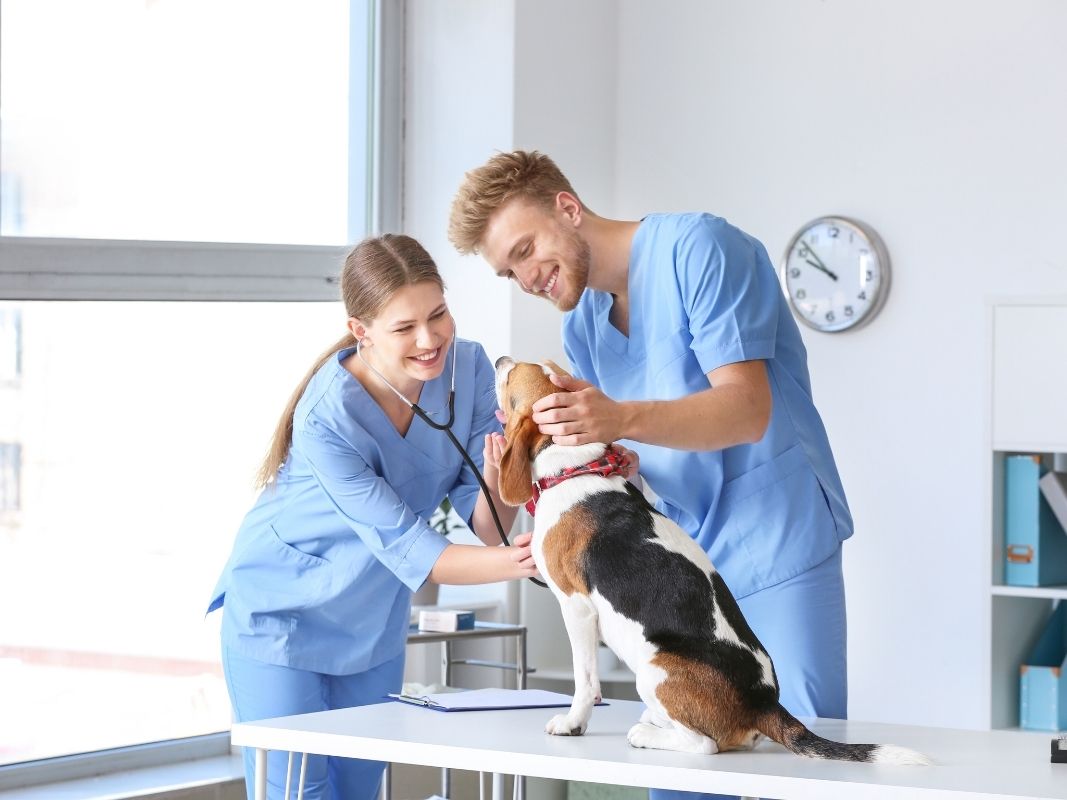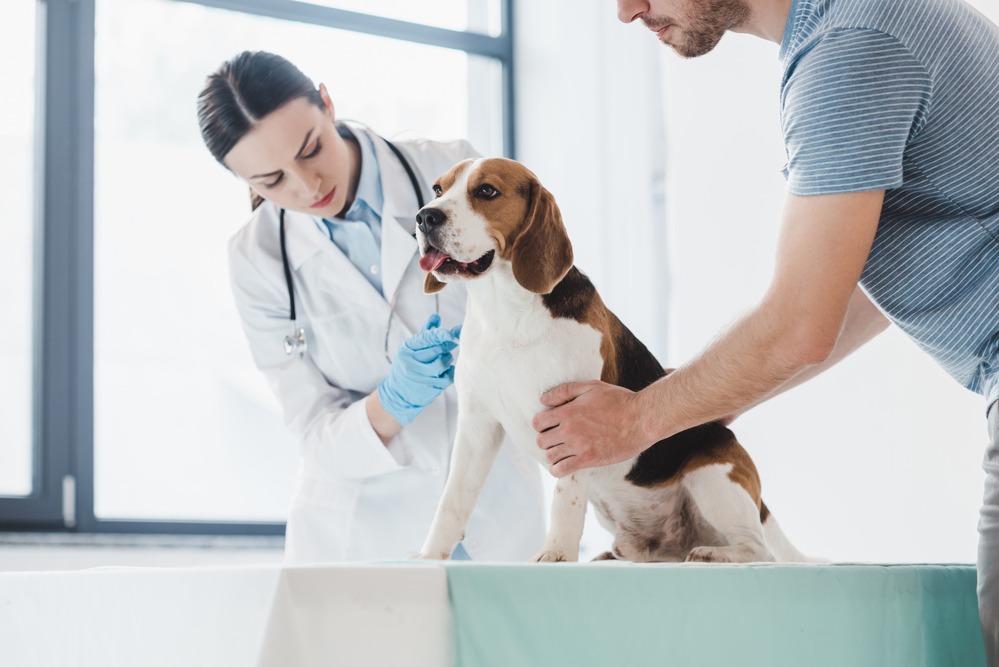FAQs Answered: What Pet Owners Should Know About canine tplo surgery
FAQs Answered: What Pet Owners Should Know About canine tplo surgery
Blog Article
All Regarding Veterinarian Surgical Treatment: Recognizing the Relevance of Expert Look After Your Pet dogs
Veterinary surgical treatment is a vital element of animal health care. It incorporates different procedures, from routine optional surgical procedures to urgent treatments. Comprehending the intricacies of these surgical procedures can aid pet dog owners make educated decisions. The preparation, execution, and recovery stages are vital for making certain the well-being of animals. With correct understanding, owners can browse the complexities of veterinary treatment. What elements should be taken into consideration prior to a family pet undertakes surgical procedure?
Sorts Of Vet Surgeries
When a pet calls for surgical treatment, recognizing the numerous kinds of vet surgical procedures can help animal owners make informed choices. Vet surgeries can be broadly categorized into three major types: elective, immediate, and emergency surgical treatments. Optional surgical treatments, such as spaying or neutering, are prepared procedures that are not immediately dangerous. Immediate surgical treatments, like those for international body elimination, have to be done soon but are not life-threatening in the minute. Emergency situation surgeries, such as those addressing severe injury or inner bleeding, are important and need instant attention.Additionally, surgical treatments can vary in complexity, varying from minimally intrusive laparoscopic procedures to extra substantial open surgeries. Each kind of surgical treatment carries its own threats and healing procedures. Recognizing these groups allows pet dog proprietors to take part in meaningful conversations with vets, bring about much better results for their precious pets.
Getting ready for Your Pet's Surgical treatment
Preparing for a pet's surgery entails a detailed list to guarantee all essentials are covered. Reliable interaction with the veterinarian is important for understanding the treatment and any kind of necessary pre-operative steps - 24 hour vet near me. Additionally, having clear post-operative care instructions will certainly assist owners provide the finest assistance for their recovering pets
Pre-Surgery Checklist Basics
Ensuring a smooth surgical experience for a pet dog requires mindful prep work and attention to information. A pre-surgery list is important for family pet owners to adhere to. First, confirming the set up surgical treatment date and time is crucial. Owners must likewise verify that their animal has fasted according to the vet's guidelines, usually for 8-12 hours before surgical procedure. Gathering necessary clinical documents, including inoculation history, is essential for the vet's testimonial. It is additionally suggested to prepare a comfy room in the house for the family pet's recovery after surgical treatment. Proprietors ought to have a strategy for transportation to and from the vet facility, making sure that the pet dog is secure and comfy throughout the trip. Following these steps can greatly boost the medical experience.
Communicating With Your Veterinarian

Reliable communication with the veterinarian is essential for an effective surgical experience for pets. Proprietors should be prepared to review their pet's clinical history, including any type of pre-existing problems, medicines, and allergic reactions. This info aids the vet analyze dangers and tailor the medical strategy accordingly. In addition, pet owners must ask concerns pertaining to the treatment, anesthesia, and anticipated outcomes to guarantee they fully recognize the process. Making clear any type of doubts can alleviate anxiety for both the pet and the proprietor. It is additionally essential to interact any behavioral changes or issues observed in the pet dog leading up to the surgical treatment. Eventually, clear dialogue promotes depend on and collaboration, ensuring that animals receive the very best feasible care throughout their surgical journey.
Post-Operative Treatment Instructions
After talking about the operation with the veterinarian, pet proprietors must focus on post-operative care directions to help with a smooth recovery for their animals. These directions commonly include checking the surgical website for signs of infection, such as inflammation or discharge. Pet dogs might need to be maintained calm and constrained to stop extreme activity that might interfere with recovery. Pain administration is vital, so owners should follow the vet's assistance on providing medications. Additionally, nutritional restrictions may be recommended to stay clear of gastrointestinal distress. Regular follow-up consultations are necessary to ensure correct recovery and resolve any type of worries. By adhering to these post-operative care instructions, pet proprietors can substantially add to their pet dog's recuperation and general wellness.
The Surgery Explained
The surgery for animals encompasses essential steps that assure their security and healing. Pre-surgery preparations are essential for minimizing dangers, while post-operative treatment guidelines play a vital duty in advertising healing. Comprehending these elements helps family pet owners navigate the medical experience extra effectively.
Pre-Surgery Preparations
Prior to a family pet goes through surgical treatment, a number of vital preparations must occur to guarantee a secure and successful procedure. A detailed vet assessment is crucial to evaluate the animal's total wellness and identify any kind of possible risks. This may consist of blood tests, imaging, or various other diagnostics. The vet will also talk about anesthetic options tailored to the pet dog's certain requirements. Furthermore, pet dog proprietors are generally advised to hold back food and water for a defined time prior to surgical procedure to lessen the risk of difficulties during anesthetic. It is very important for owners to give a complete medical history, including any drugs or allergies, making certain the medical team has all needed information. Proper interaction and adherence to pre-surgery standards can greatly enhance the result of the treatment.
Post-Operative Care Standards
Proper post-operative care is vital for ensuring an animal's recuperation following surgery. After the procedure, pet dogs must be checked very closely for any type of indicators of problems, such as extreme blood loss, swelling, or unusual actions. It is essential to adhere to the veterinarian's directions regarding medicines, including painkiller and anti-biotics. Pets should be maintained in a silent, comfy setting to lower anxiety and promote healing. Restricting activity is important; short, leashed walks might be needed, but leaping or running should be stayed clear of. Routine follow-up consultations should be arranged to analyze the healing process. In addition, the surgical site should be kept tidy and dry, with any kind of indicators of infection reported to a veterinarian without delay. Sticking to these standards boosts recuperation end results.
Anesthesia and Pain Monitoring
Efficient anesthesia and discomfort administration are essential elements of vet surgical treatment, making certain that pets continue to be comfortable and safe throughout the treatment. Veterinarians assess each family pet's private requirements, considering variables such as age, weight, health condition, vet locator and the type of surgical treatment being performed.Anesthesia procedures typically consist of a mix of pre-anesthetic medications, induction representatives, and inhalant anesthetics, enabling for accurate control over the pet's degree of awareness. Surveillance throughout surgical procedure is vital; vets constantly observe essential indications to attend to any type of potential issues promptly.Pain management methods might entail opioids, non-steroidal anti-inflammatory medicines (NSAIDs), and local anesthetics, tailored to the pet dog's specific circumstance. This multifaceted technique helps reduce pain and promotes a smoother surgical experience. By focusing on reliable anesthesia and pain monitoring, veterinary professionals boost the total well-being of animals undertaking procedures, guaranteeing they get the highest possible requirement of treatment.
Post-Operative Care and Recovery
Adhering to surgical procedure, the emphasis moves to post-operative treatment and healing, which is vital for making sure a pet's risk-free return to normal tasks. Throughout this period, family pets need a quiet, comfortable environment to aid recovery. Proprietors must carefully monitor their animals for any type of indications of discomfort or unusual behavior.Veterinary guidelines frequently include particular instructions associated with medication management, injury care, and nutritional adjustments. It is crucial to comply with these recommendations to decrease problems and advertise recovery. Animals may need to be restricted from vigorous activities, such as running or jumping, throughout their recuperation period (veterinary cardiologist near me).Regular follow-up consultations with the veterinarian permit monitoring of the family pet's development and prompt modifications to the care strategy. Supplying psychological support and friendship can also boost a pet's healing experience, assisting to minimize stress and anxiety. In general, persistent post-operative care plays a considerable role in attaining a successful healing
Acknowledging Complications After Surgical Treatment
Exactly how can family pet owners recognize problems after surgery? Awareness of particular indications is important for making certain the well-being of animals during healing. Usual indications include too much swelling, redness, or discharge at the surgical site, which may represent infection. In addition, consistent discomfort, shown by whining or hesitation to relocate, ought to prompt instant interest. Modifications in cravings or water consumption can also show problems; a decrease in these actions might indicate pain or distress.Moreover, family pet owners ought to check their animals for any unusual habits, such as sleepiness or difficulty breathing, as these can be signs of serious concerns. Throwing up or diarrhea following surgical treatment may need urgent veterinary analysis. Acknowledging these difficulties early can substantially affect a pet's healing procedure, highlighting the significance of vigilance and prompt communication with a vet for any kind of concerning signs.
The Role of Vet Specialists in Surgical Treatment
Veterinary experts play a vital duty in making certain the security and success of surgical treatments for pets, especially following surgical treatment when keeping an eye on and treatment are vital. These professionals consist of veterinarians, vet service technicians, and support staff, every one of whom add specialized skills to the medical process.Before surgical procedure, vets conduct thorough evaluations to analyze the pet dog's health, guaranteeing that any hidden conditions are taken care of. Throughout the procedure, the medical group supplies anesthetic, preserves sterilized settings, and monitors essential indications, very important for lessening risks.Post-operative treatment is just as substantial; vet specialists observe for issues, take care of discomfort, and guide proprietors on recovery practices. Their know-how allows them to identify early signs of distress or infection, ensuring timely intervention. Eventually, the collaborative efforts of vet experts in surgical treatment cultivate a risk-free environment, promoting the wellness of pet dogs throughout the surgical trip.

Regularly Asked Inquiries
Exactly how Do I Choose the Right Vet Cosmetic Surgeon for My Family pet?
Choosing the right veterinary doctor involves investigating credentials, reading reviews, and evaluating the center's setting. It is vital to show on the cosmetic surgeon's experience with particular treatments and their communication design when making a choice.
What Are Typical Misconceptions Concerning Veterinarian Surgeries?
Typical mistaken beliefs about veterinarian surgeries include beliefs that they are constantly dangerous, unneeded, or for emergency situations. Lots of animal proprietors ignore the advantages of precautionary procedures and the skill associated with vet surgical treatment.
Exactly How Much Will My Pet's Surgical treatment Cost?
The cost of a pet dog's surgical procedure can vary significantly based upon variables such as the type of treatment, the veterinarian's experience, and geographical place (24 hour vet bellingham). Usually, expenditures vary from a couple of hundred to numerous thousand bucks

Can My Pet Eat Before Surgical Treatment?
Before surgical procedure, it is typically suggested that pets abstain from eating for a particular period. This fasting helps in reducing the threat of problems during anesthetic. Proprietors must consult their veterinarian for accurate instructions tailored to their pet dog's requirements.
What if My Pet Has Pre-Existing Health And Wellness Conditions?
When a pet dog has pre-existing wellness problems, it's vital for the vet to examine these elements before surgical treatment. This analysis guarantees proper preventative measures are taken, lessening threats and maximizing the pet dog's general safety and security during the treatment.
Report this page